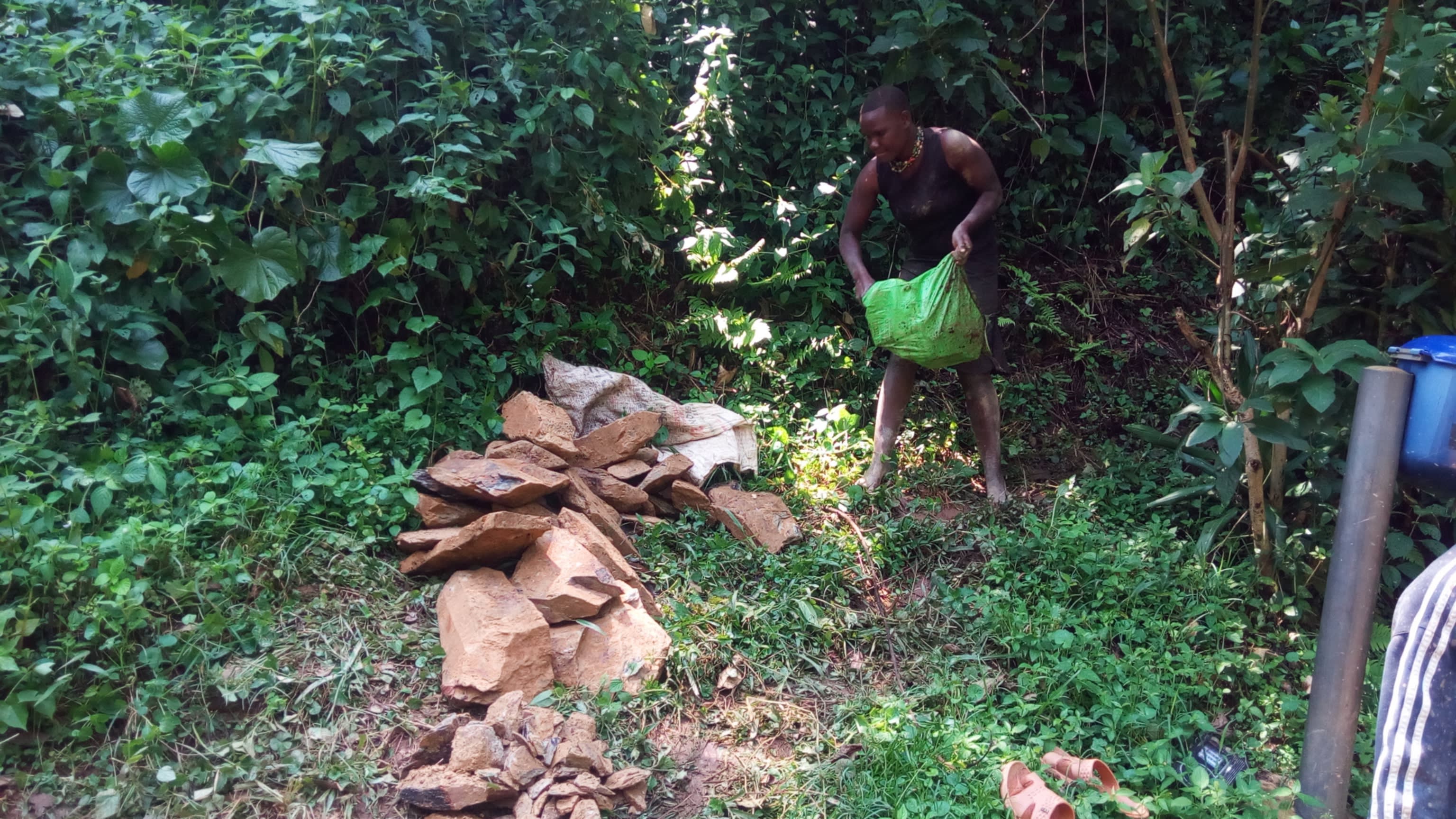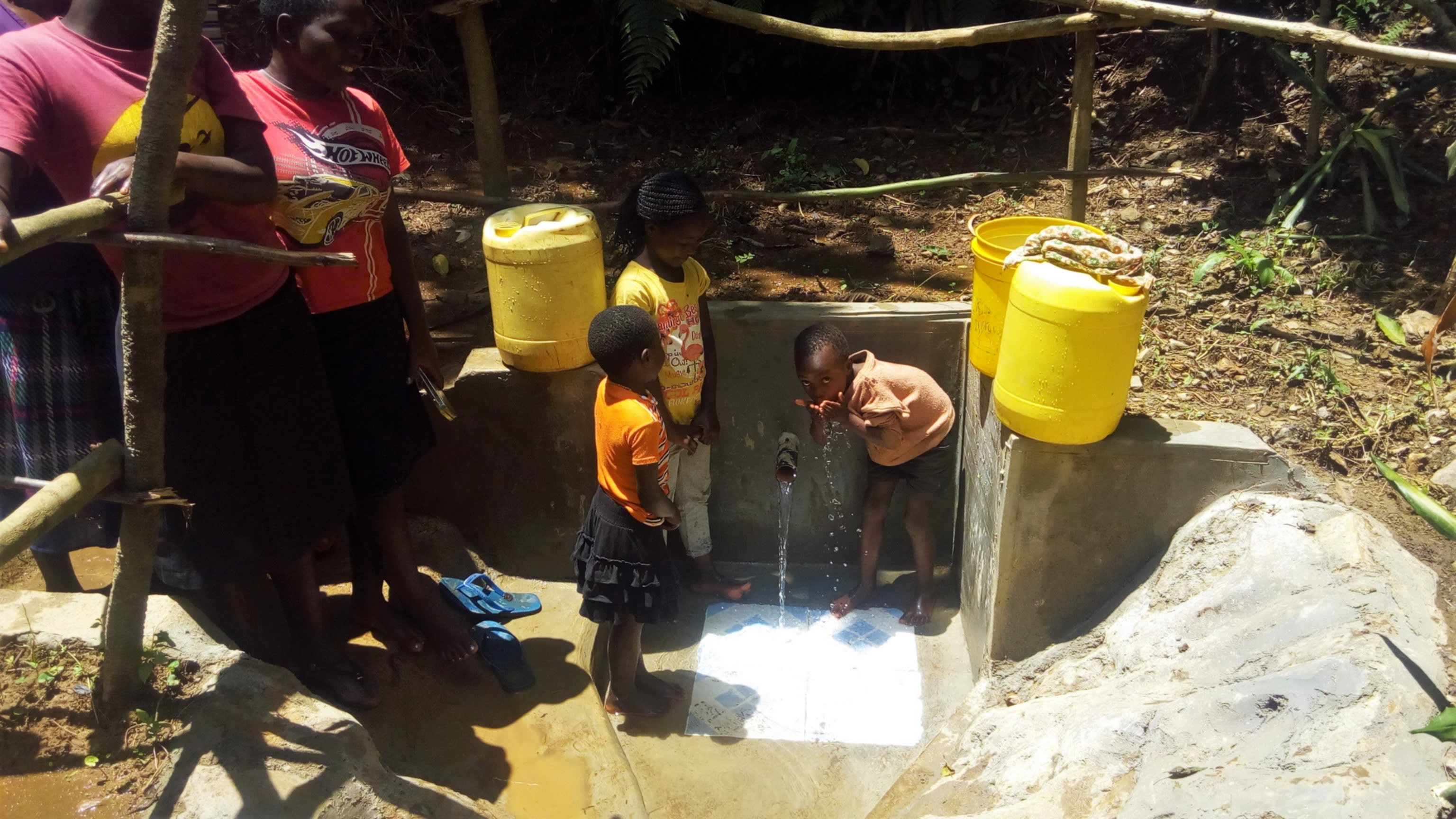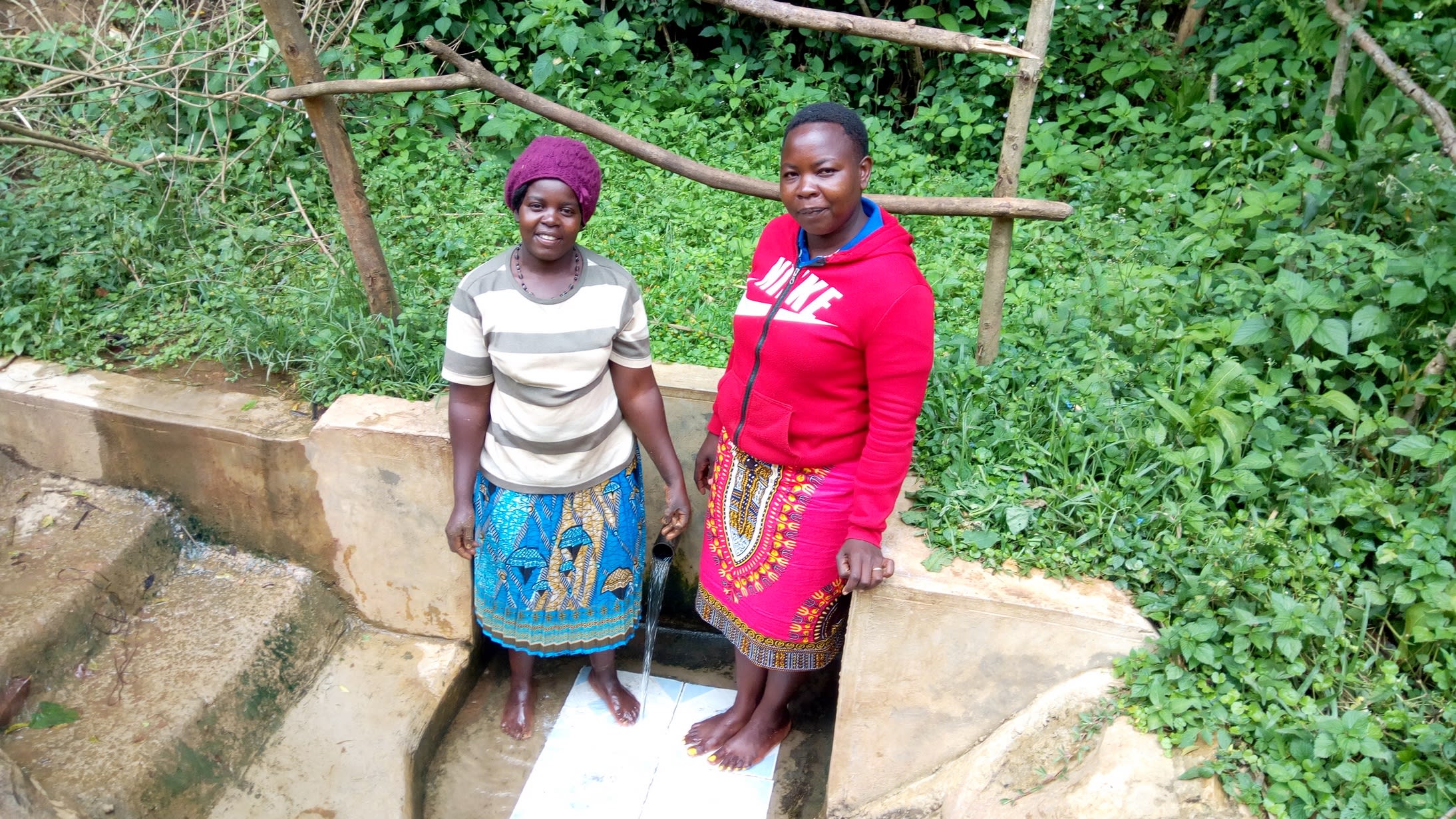This project is a part of our shared program with Western Water and Sanitation Forum (WEWASAFO). Our team is pleased to directly share the below report (edited for clarity, as needed).
Welcome to the Community
A normal day in Hondolo Community starts at 6am. Parents who have school-going children start by preparing them for school. Once they have finished and seen them off, they embark on subsistence farming activities. They usually grow maize and beans.
Poverty levels are very high in Hondolo Village, with most children seen at home throughout the day because their parents cannot manage to pay their school fees.
Water Situation
Musila Spring is one of the main water sources for the families in Hondolo Community. Women make several trips a day with their 20-liter jerrycans full of dirty water. They must also carry a smaller container or a cup to help them bail from the pool of water to their jerrycan. When the water levels are high, women are able to hold their jerrycan under the surface until full.
Musila Spring is located at the bottom of the hill, which makes it especially susceptible to contamination - farming chemicals, dirt, and waste is washed into the water when it rains. People even step into the water as they fill their containers, further dirtying the water. During the dry season, this spring continues to flow with water. Because of this, even more families travel to find water at Musila Spring.
This water is used for cooking, cleaning, and drinking. After consuming this water, waterborne disease follows.
Sanitation Situation
Less than half of households have pit latrines. Those seen during our visit are in poor condition - many are full and smelly, while others are missing doors! Because of these poor conditions, open defecation is an issue. People prefer the privacy of bushes or farms to relieve themselves, whereafter waste is spread by animals, flies, and rainwater. Even one offender can jeopardize the health of an entire community!
Less than half of households use helpful tools like dish racks and clotheslines to dry their belongings. There are a few hand-washing stations here, and we've included a picture of one of these.
Plans: Hygiene and Sanitation Training
Community members will attend hygiene and sanitation training for at least two days. This training will ensure participants are no longer ignorant about healthy practices and their importance. The facilitator plans to use PHAST (Participatory Hygiene and Sanitation Transformation), CLTS (Community-Led Total Sanitation), ABCD (Asset-Based Community Development), group discussions, handouts, and demonstrations at the spring.
Training will also result in the formation of a committee that will oversee operations and maintenance at the spring. They will enforce proper behavior around the spring and delegate tasks that will help preserve the site, such as building a fence and digging proper drainage.
Plans: Sanitation Platforms
On the final day of training, participants will select five families that should benefit from new latrines.
Training will also inform the community and selected families on what they need to contribute to make this project a success. They must mobilize locally available materials, such as bricks, clean sand, hardcore, and ballast. The five families must prepare by sinking a pit for the sanitation platforms to be placed over. All community members must work together to make sure that accommodations and food are always provided for the work teams.
Plans: Spring Protection
Fetching water is predominantly a female role, done by both women and young girls. Protecting the spring and offering training and support will therefore help empower the female members of the community by giving them more time and efforts to engage and invest in income-generating activities.
In addition, protecting the spring will ensure that the water is safe, adequate and secure. Construction will keep surface runoff and other contaminants out of the water.
Protecting this spring will result in increased water quality and water flow. Those living in Hondolo will thus be able to live happier, healthier lives as they efficiently fill their containers with clean water from Musila Spring.

 Protected Spring
Protected Spring
 Rehabilitation Project
Rehabilitation Project






























